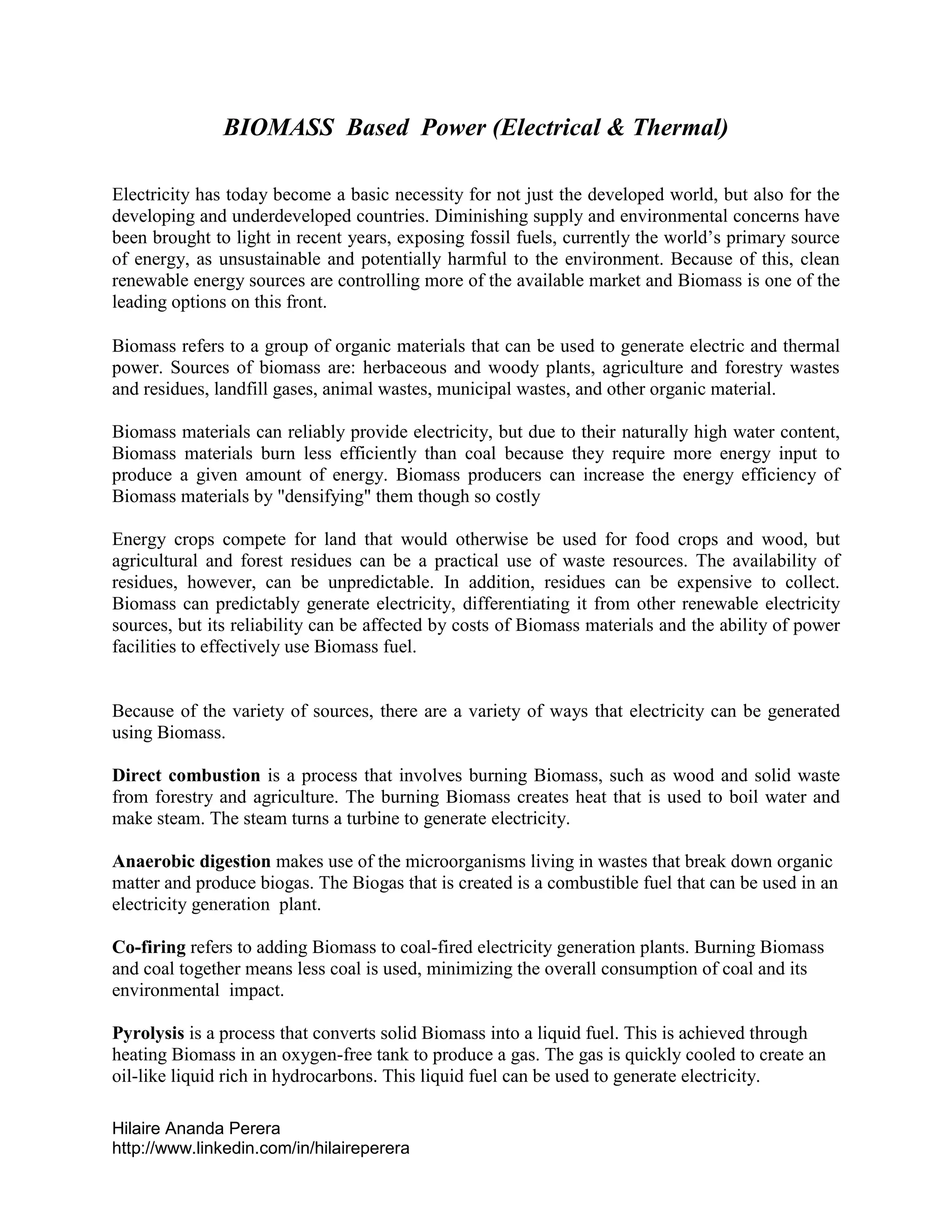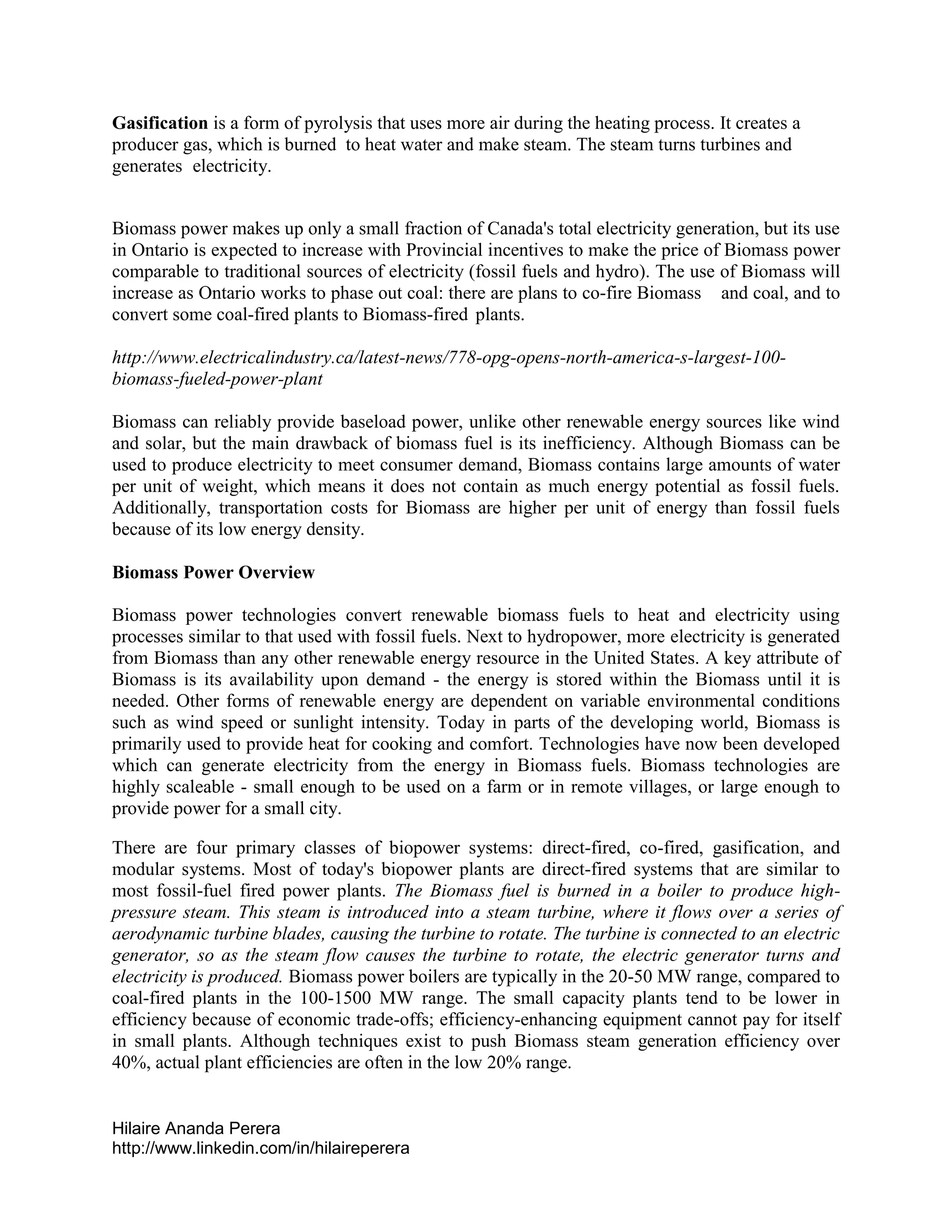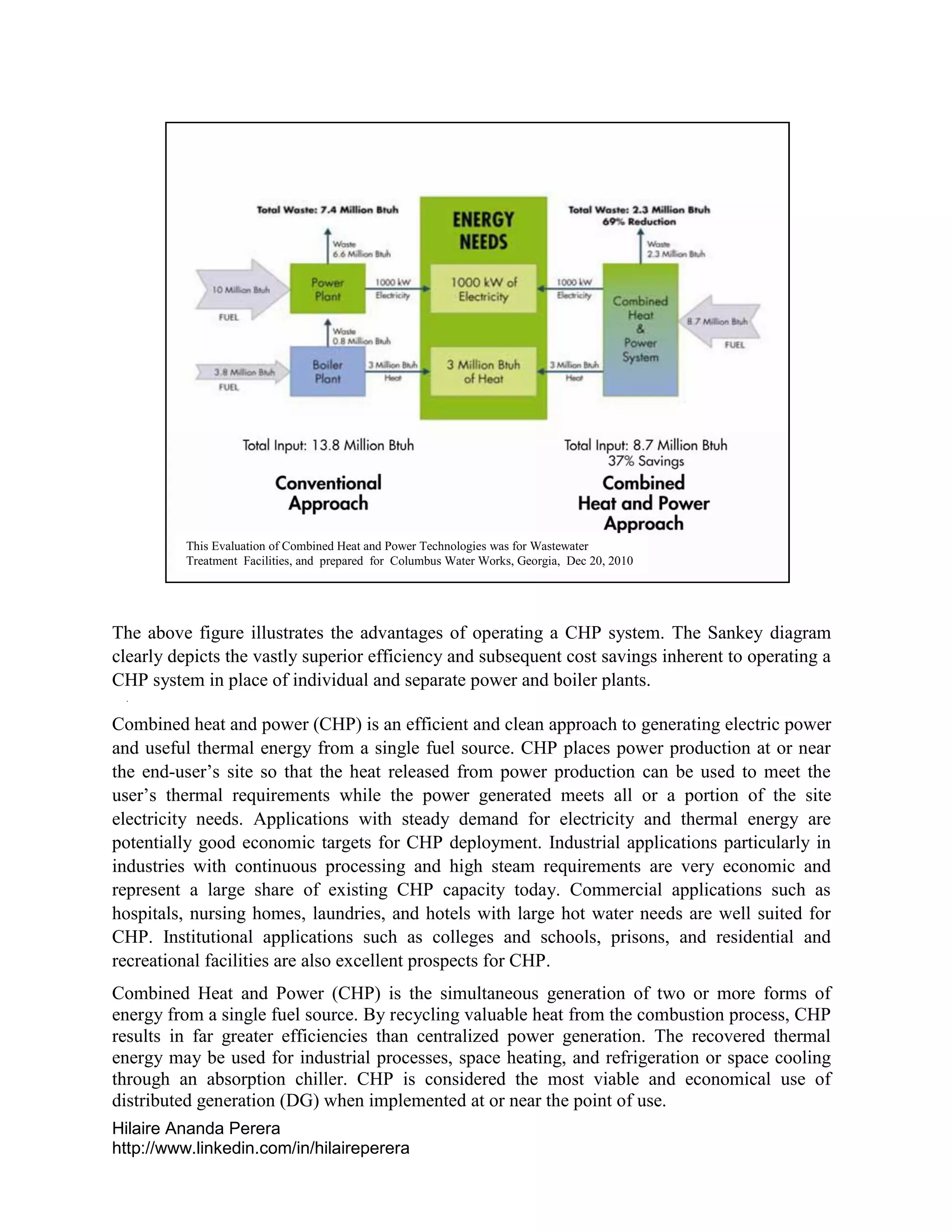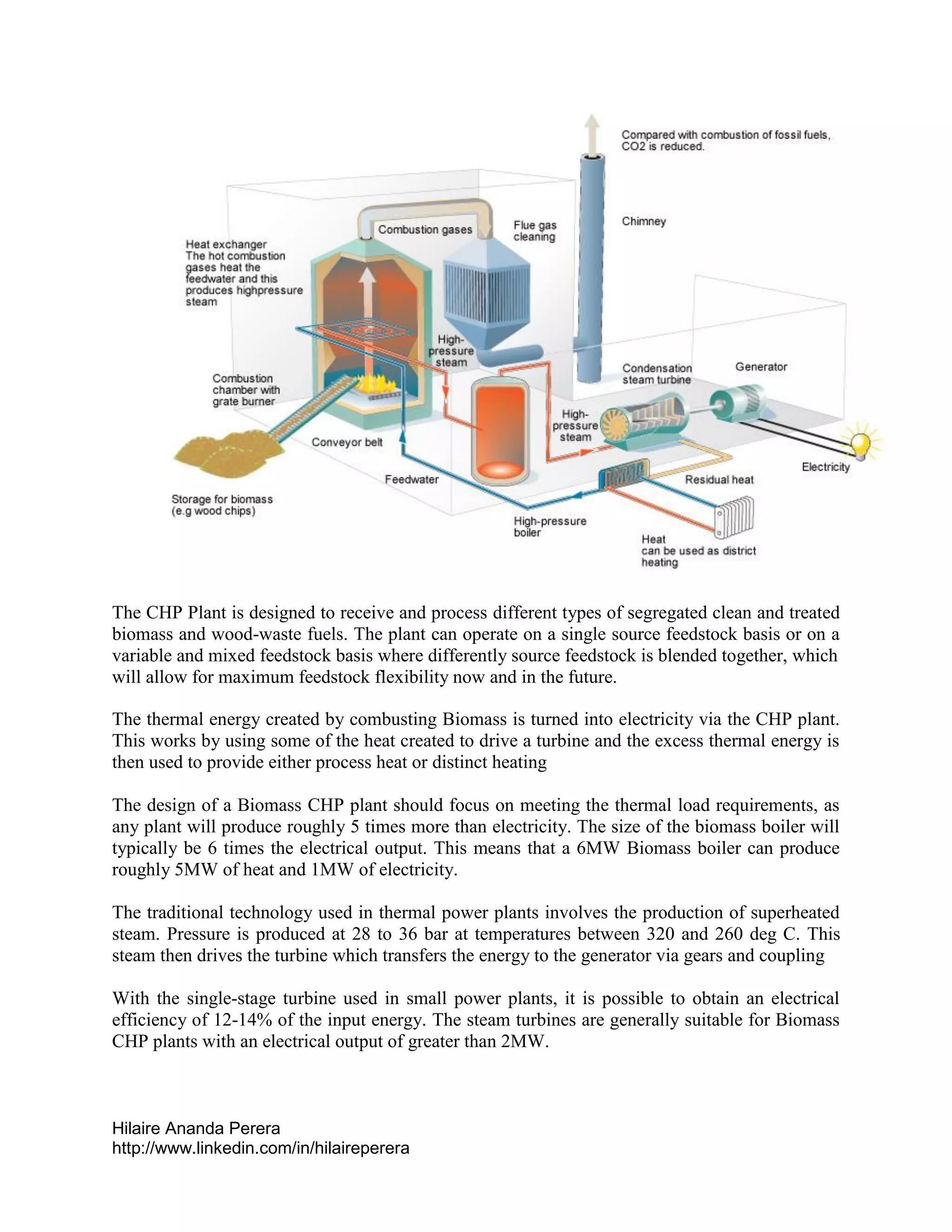Biomass power, derived from organic materials, offers a renewable and carbon-neutral energy source for electricity and thermal power generation. While biomass can reliably provide electricity and is expected to increase its market share, it faces challenges such as inefficiency, collection costs, and environmental concerns regarding resource competition and emissions. Technologies like direct combustion, anaerobic digestion, and combined heat and power systems illustrate the diverse methods of biomass utilization, though achieving cost-effective and sustainable feedstock supply chains remains a critical hurdle.







